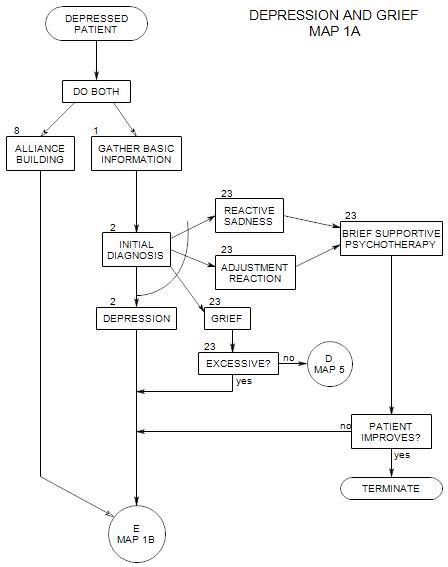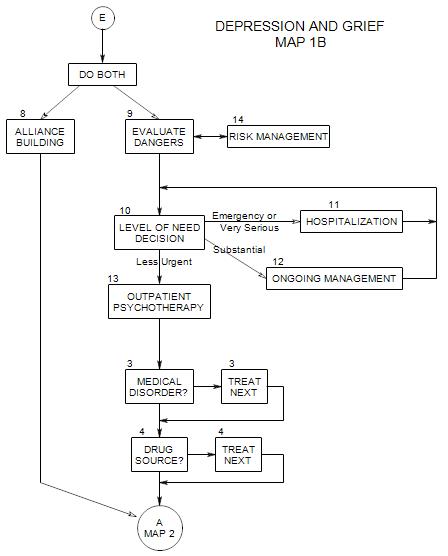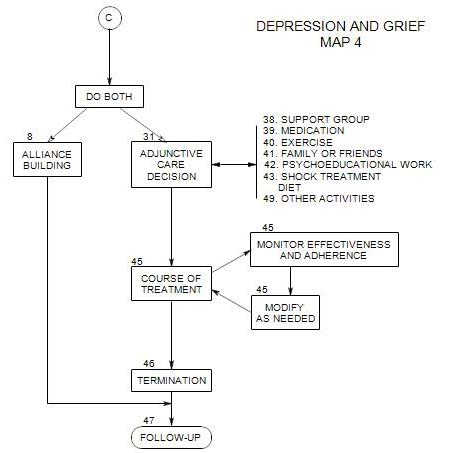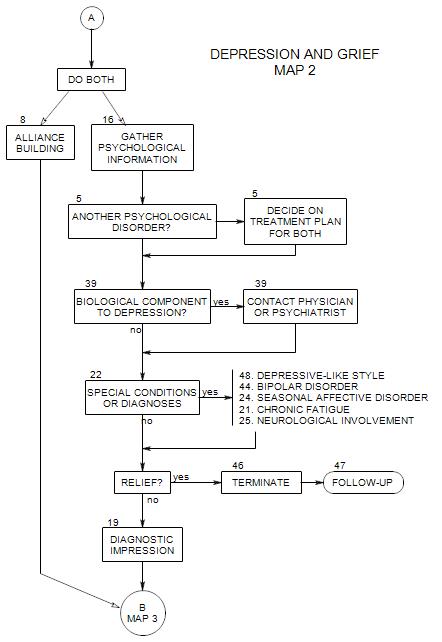
SECTIONS: 5 | 8 | 16 | 19 | 21 | 22 | 24 | 25 | 39 | 44 | 46 | 47 | 48
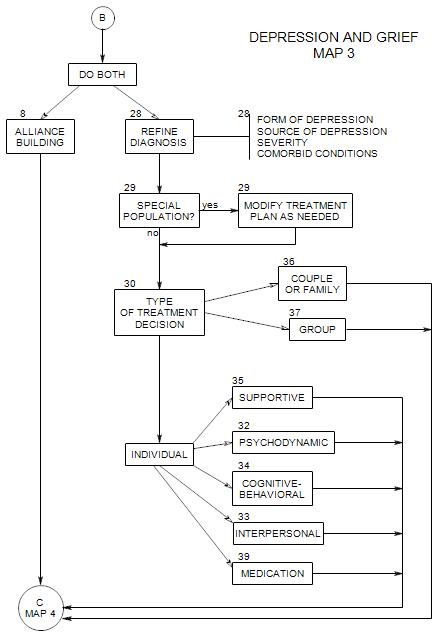
SECTIONS: 8 | 28 | 29 | 30 | 32 | 33 | 34 | 35 | 36 | 37 | 39
-
Follows Section 9 on Map 1B.
This decision is also included in two sections on New Patient Map 2: Section 13: Evaluating Risks and Section 14: Level of Care Decision
If you have just linked from that map, it may seem soon to reconsider the issue.
However, with a depressed patient, both the dangers and the choices tend to be more specific than with many other patients. And the risks may also be greater.
10a. Risks with a Depressed Patient
As always, our primary basis of choosing level of care is the physical safety of the patient and others close to the patient.
- for a moderately depressed person, physical safety often refers primarily to the neglecting of things that are important for his/her own health or safety or the health or safety of others.
- in some cases, where the person covers over depression with anger and acting out behaviors, there is a chance of outwardly directed aggression.
- for a severely depressed person, you may also need to be concerned about suicide, and in some cases, violence followed by suicide
A second level of concern is about the person failing to do other things necessary for self-maintenance and daily living:
- meeting responsibilities for work or child care.
- doing other tasks of daily life: bathing, eating the right foods, throwing out garbage, etc.
- getting to therapy sessions.
10b. Level of Care Options for a Depressed Patient
As in the more general case, our management options include…
- hospitalization.
- day care of some kind.
- outpatient psychotherapy.
Choice among the options is determined, to a great extent, on the patient’s level of need. Need may be classified:
- emergency, when the patient is at such risk that he/she can’t be trusted to survive without substantial care. Immediate hospitalization is essential.
- very serious, when hospitalization is needed to stabilize the patient or constant supervision is needed in order to avoid self destructive behavior. A person could also need constant supervision or removal from daily life if it seems that a slight increase in stress could precipitate a self destructive episode.
- substantial, day care or daily attention is needed to give an adequate amount of treatment and help avoid self-destructive behavior
- less urgent, if the patient can reasonably be treated by outpatient psychotherapy. Most patients tend to fall in this category.
10c. Other Issues in Selecting a Level of Care
- ―mental status
- ―amount of available support
- ―need to detox
- ―principle of minimal effective interventions
- ―assessment of patient strengths
- ―cost and insurance issues
